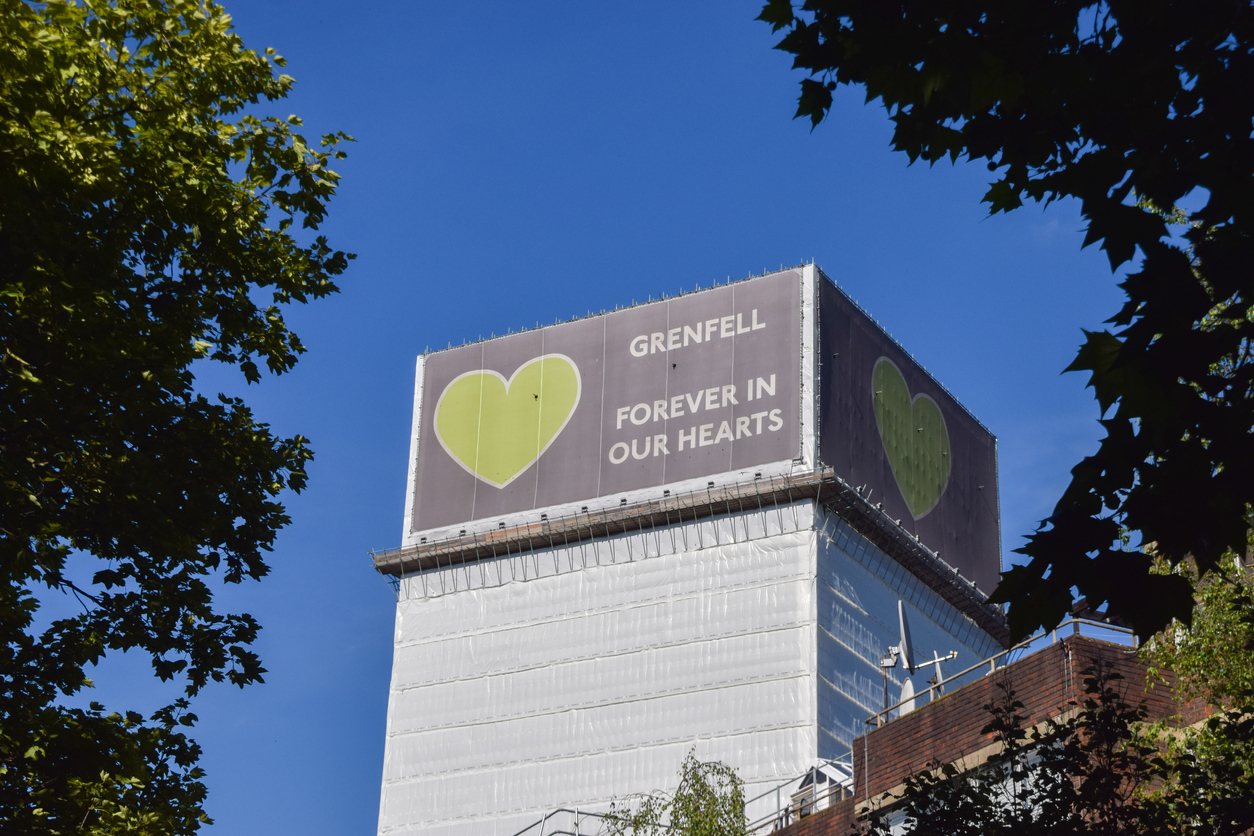Grenfell Tower Fire
In the summer of June 2017, in the early hours of the morning, a fire broke out in Grenfell Tower in the Royal Borough of Kensington and Chelsea. This deadly fire cost many lives and has raised significant questions about how such buildings are constructed and the fire safety practices employed when faced with such emergencies.
As the deadliest structural fire in the UK since 1988, the impact of this tragedy is still being felt today. For this reason, we wanted to look in more detail at the causes, the timeline, the impact on people’s lives and whether the fire safety lessons have been learned from this disaster.

What caused the Grenfell Tower fire?
It’s believed the fire started shortly before 1 am due to an electrical fault with a fridge-freezer in one of the flats. It is now known that residents had raised the issue of power surges within the building, something that experts claim could have caused the malfunction of the refrigerator involved.
While that explains the initial outbreak of the fire, a bigger role in the blaze was played by the building’s cladding. Aluminium sandwich plates containing a polyethylene core, plus a ventilation gap, are thought to have created a chimney effect. Once the fire reached this cladding, it spread quickly, unbeknownst to the original attending fire crew who tackled the fire inside the flat.
Grenfell Tower had been given new external cladding in 2016, which has since been confirmed did not comply with building regulations. This is believed to be the major factor in the rapid spread of fire up and across the building.
Grenfell Tower timeline
00.54 – Behailu Kebede, woken by a smoke alarm, finds smoke by his fridge-freezer and calls 999 immediately.
00.59 – The first of four fire engines arrives.
01.07 – The first fire crew enters flat 16 on the fourth floor.
01.14 – The fire crew enters the kitchen, where they find fire across the window and tackle the flames.
01.26 – By this point, the fire has broken out of the window on the east side of the building and moved up the building via external cladding, reaching the 23rd floor in just 25 minutes.
01.42 – The fire has now reached the north side of the building.
01.52 – The fire begins to travel to the south side of the building.
02.06 – London Fire Brigade declares a major incident, with 40 fire engines either at the scene or on their way.
02.30 – The east side of the building has now been completely engulfed in fire.
02.47 – The incident commander instructs people to leave the building, effectively ending the “stay put” advice normally given to such incidents in high-rise blocks.
02.51 – The fire has now reached the western side of the building, with 63 flats on fire and over 100 people still inside.
04.30 – The whole building is engulfed in flames, with over 100 flats on fire.
08.07 – The last survivor is evacuated from the tower.
Grenfell Tower Deaths
While 223 people escaped the tower, sadly, this was the most deadly residential fire in the UK since the Second World War, costing the lives of 72 people in total, including:
- 53 adults
- 19 children
Two of these victims died later in hospital after escaping, while 70 other people suffered injuries in their escape from the blaze. The youngest victim was Logan Gomes, who was stillborn after his mother collapsed and was rescued by her husband. The eldest victim of the fire was 84 years old.
Grenfell Tower lessons learnt

This devastating fire has, quite rightly, prompted a number of investigations, public inquiries and coroner’s inquests. There are two major issues that have been highlighted, the first of which is the aluminium composite material used as cladding and how it has also been used on many other high-rise buildings.
While the majority of these buildings have now had the cladding removed, there were a handful of buildings still waiting for the remediation work to even begin at the time of writing. This is long past the government’s initial deadline to have the work completed by 2020.
The second major lesson surrounds the use of the ‘stay put’ policy by the London Fire Brigade. It was criticised at the time because it meant Grenfell residents were told to stay in their flats for many hours as the blaze spread around the building.
This endangered people’s lives, since the building did not technically meet the required standards. The policy is still in use, however, as it is deemed appropriate where a high-rise building has been designed to contain a fire through compartmentalisation. Thankfully, some Grenfell residents evacuated before the notice to ‘stay put’ was called off.
As a result of these multiple inquiries and the failings that shaped the Grenfell Tower disaster, there have been recommendations to improve firefighting and the way buildings are managed. It is hoped many of these will be reflected in new fire safety guidance for October 2023, with the Building Safety Act 2022 making amendments to the Regulatory Reform (Fire Safety) Order 2005. This is the third phase, adding to Phase 1 (Fire Safety Act 2021) and Phase 2 (Fire Safety (England) Regulations 2022).